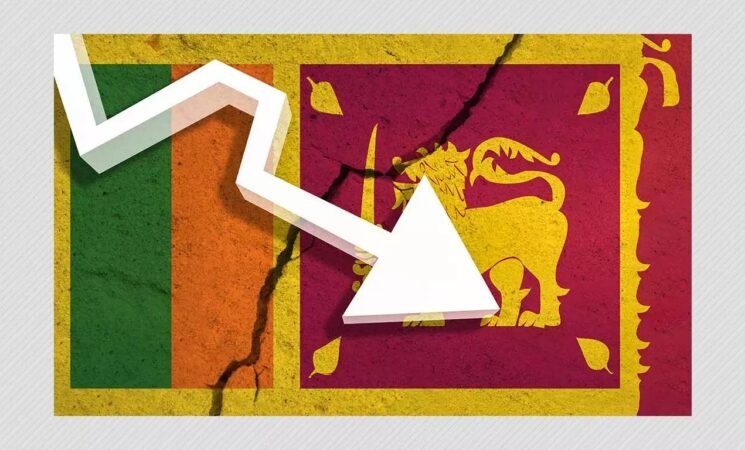7 April 2022, NIICE Commentary 7751
Bhawna
At present, it is clearly evident that the new world order has been evolving gradually particularly in terms of ‘Economic Power’ which act as a driving force and hence, influences the already established ‘Power Matrix’ among the countries. This power matrix is well defined economically as well as politically and plays a consequential role in the construction of the ‘Foreign Policy’ of any country. Over the past few years, India has been witnessing a steady economic growth rate through enhancement of exports in the global competitive markets which helped her to secure its positioning in the international economies. India has been reaping the benefits of its higher growth rates while sharing its economic success with its neighbouring countries namely Bhutan, Nepal, Sri Lanka, Bangladesh, Maldives and Afghanistan by providing them ‘Financial Aid’ which act as a ‘safety net’ in order to restore the everlasting relations with her neighbours.
The financial aid/assistance simply means the monetary support that any individual, organisation or a government receives. There are several factors in line to explain the need to grant financial assistance to its neighbourhood but it still lacks a comprehensive understanding. Historically, India was extending developmental assistance to its neighbours with the intention to fund their infrastructural projects which ultimately lead to increase in their GDP (Gross Domestic Product) but it has been observed that the focus has been shifted cautiously from funding developmental avenues directly towards granting full-fledge financial aid along with the option of ‘line of credit’. Out of all the neighbours, the primary recipient of India’s financial aid are Bhutan, Nepal and Sri Lanka.
The recent case of Sri Lanka’s economic crisis has been gathering attention globally and has hampered her economy substantially. The Sri Lanka has been experiencing problem of the ‘Economic Debt Trap’ since a very long-time which attributes to the China’s massive loan repayment which China has granted to Sri Lanka for investment in ports and infrastructural projects. In the present context, the Sri Lanka’s economic burden has been intensified because her ‘Forex reserves’ have been dried out entirely due to which she has been unable to import crucial commodities like fuel, food and medicines. In fact, the common man of Sri Lanka is hit hardly by the soaring inflation rate of 15 percent, which is the highest since 2008. And all these subsequent events further ignited anger among them against their own President ‘Gotabaya Rajapaksa’ for not dealing with the prevailing economic situation effectively. The Sri Lankan people have been protesting and demanding the stablisation of the Sri Lankan economy and to reverse back the current economic disaster from the ruling government.
Additionally, the aftermath consequences of the recent geopolitical ruckus between Russia and Ukraine have triggered the world economies primarily in term of sudden hike in crude oil prices. The crude oil is deemed to be the backbone of all the economic activities in a country and all the other secondary activities are contingent on it. But this unanticipated rise in prices could not be absorbed by the Sri Lankan economy due to various reasons. The most obvious cause is that Sri Lanka has been burdened with the colossal stack of public debt which is roughly around 110 percent of its GDP. As per the working paper of ‘Asian Development Bank’- “Sri Lanka is a classic ‘twin deficits economy”, which basically mean that Sri Lankan economy has been experiencing both fiscal as well as current account deficit, showing higher national expenditure than its national income.
Similarly, the internal politics of Sri Lanka has equally played an important role in worsening economic crisis even further. In fact, some critics argue that the origin of the crisis is the mishandling of the economic activities by the consecutive governments over a period of time that has exacerbated the economic situation even more. The monopoly of Rajapaksa brothers in influencing domestic politics, corrupt politicians and their hidden agendas, economic mismanagement, massive public debt, foreign reserves shortfall and China’s interference in every infrastructural project in Sri Lanka, all have contributed to the prevailing situation. In order to fix this macro economic imbalance, Sri Lankan government has been reaching out to the International Monetary Fund (IMF) for bailout packages and also been appealing Indian government to rescue its sinking economy. In fact, India has extended the line of credit of USD 1 billion to Sri Lanka with the intention to pull her out of this economic crisis and has been transporting medicines and essential commodities. Evidently, at the moment, the received amount is not sufficient to reverse back the current situation. Ideally, Sri Lanka should devise a sustainable option to achieve the balanced position. Sri Lanka needs to restructure its debt management policy which can be more impactful in the long-run. The IMF bailout packages are subjected to some conditionalities which simply mean that IMF not only grant bailout package but also get the license to intervene in the fiscal as well as monetary policy of the country. At the moment, no country will be able to fully rescue Sri Lanka but if Sri Lanka wants IMF to come forward and rescue her then she has to compromise with its financial sovereignty. As of now, the situation is getting worse day by day and Sri Lanka is losing hold of her economy so, Sri Lankan government has to look for some viable and sustainable option in order to rescue itself from this economic crisis.
Bhawna is Research Interns with NIICE.

